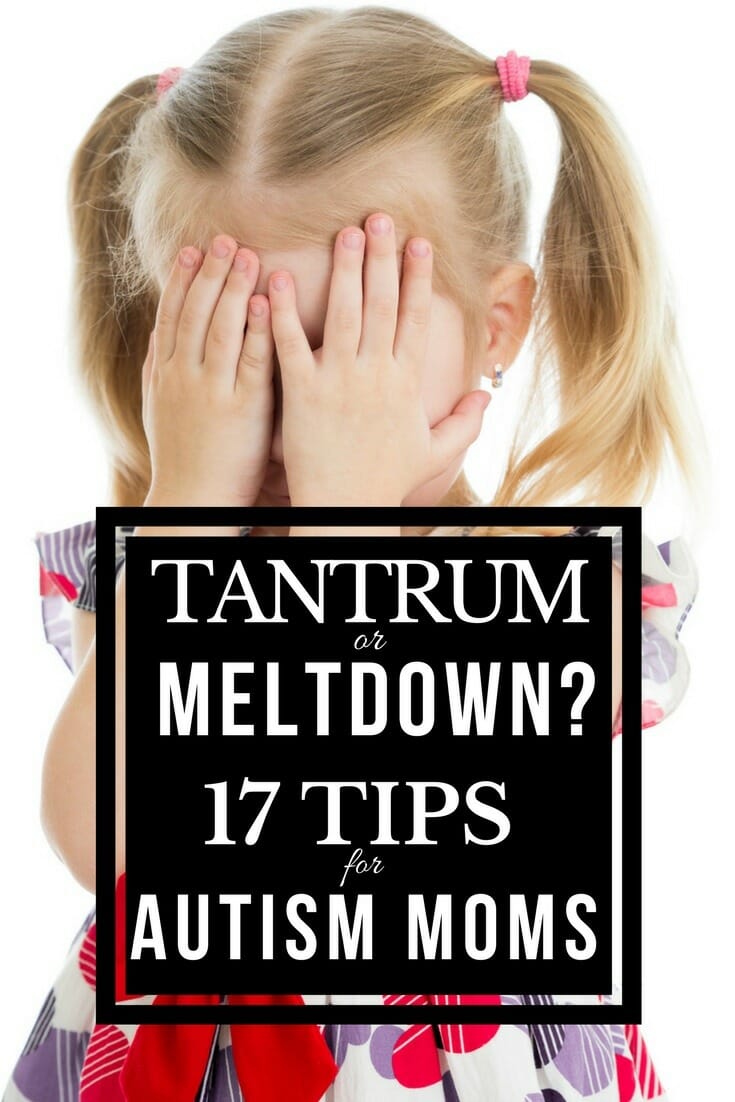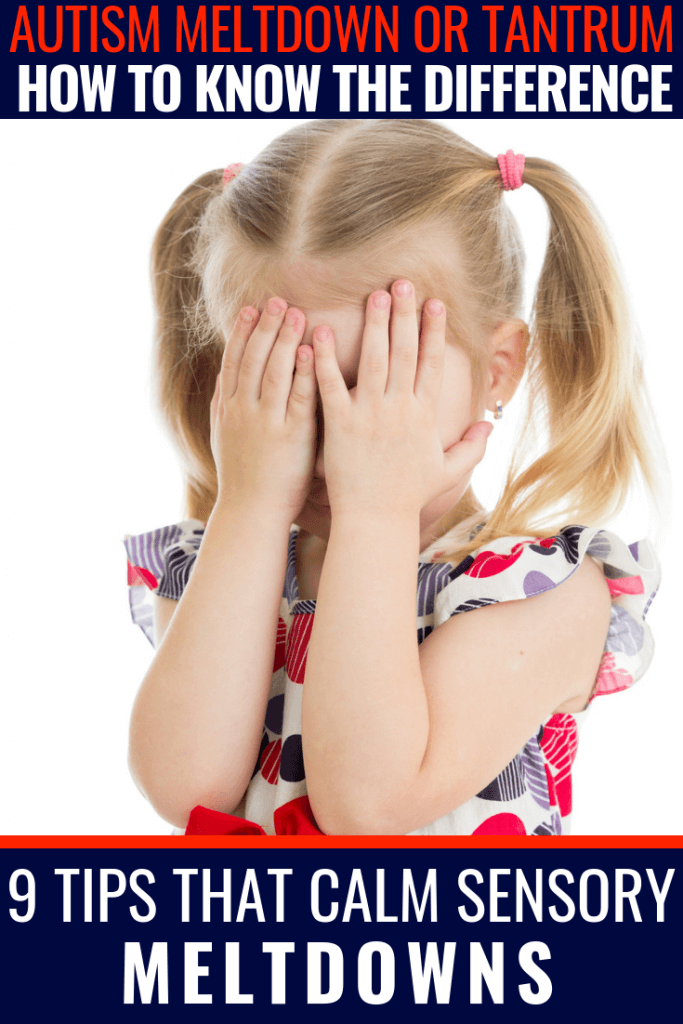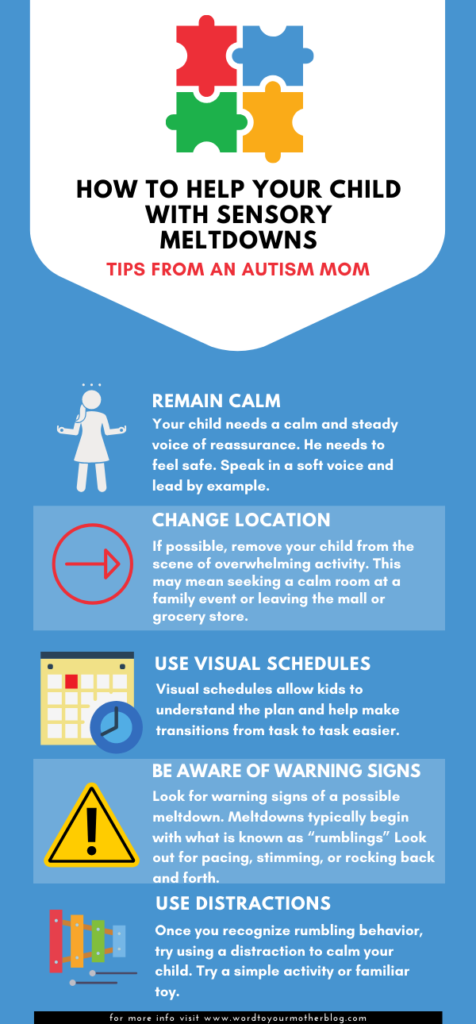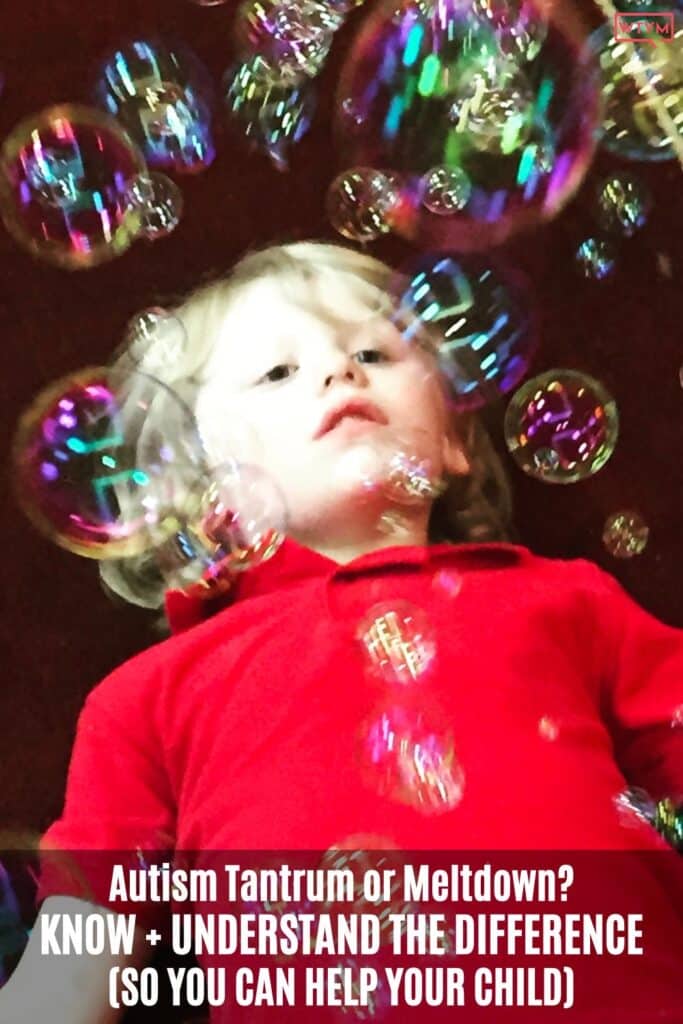Autism is not an excuse for bad behavior. My mom told me that after visiting us at Christmastime last year, My mother thought my autistic son’s Christmas Day autism meltdown was due to a lack of discipline. And yes, that is a ton of judgemental, non-Santa-esque baggage for the holidays. But it’s okay; she was wrong due to her lack of understanding. Please don’t make the same mistake. The following article will help shed some light on coping and identifying an autism meltdown instead of a tantrum.

See, he was overloaded by all the holiday festivities, and six hours into the happiest day of the year, he broke down hardcore style.
We’re talking red-faced, nonstop, inconsolable crying. My parents were trying to reason with him amid a complete autism meltdown, which resulted in more anger and a bite mark on my mother’s hand, which she showcased as if it were a medal.
***Cue the Frustrated Sigh and Insert Curse Words Here***
If you’re a parent of a child with autism, then you may have a similar frustrating story. You know that there’s a difference between a tantrum and a meltdown.
And you do not handle them in the same way.

This post may contain affiliate links. For more information, please see my disclosure page.
A tantrum occurs when your child is denied something they want. Generally speaking, he is in control of his behavior in a tantrum scenario.
When my daughter, Lylah Kate, was little, she was known for throwing “hissy fits” every time she went with my husband on a grocery store or Walmart run.
It went something like this: She would ask for candy- he would say no– and the fit began.
As they made their way through the grocery list, her tantrum would build, and she would cry and scream until he gave in to her demands for a Hershey’s bar, bag of Skittles or whatever trending Unicorn candy was on sale at the time.
Why?
Because she knew he would eventually give in and she’d get what she wanted.
Unknowingly, he was reinforcing her bad behavior by buying her candy. During her fits or tantrums, even the BIG ones, my daughter was entirely in control of her behavior and did not harm herself.
Key Takeaway:
Tantrums are goal driven behaviors.
Meltdowns are not.
Autism Meltdowns
Autism meltdowns happen as a result of sensory overstimulation and a feeling of being overwhelmed. That’s why they’re also known as sensory meltdowns.
Sometimes there’s an apparent cause for these meltdowns like a change in routine, hunger, thirst, lack of sleep, and sensory overload.
Too many holiday festivities triggered my son’s meltdown; too many people, activities, and the change in his routine resulted in sensory overload.
During a meltdown, your child is not in control of his behavior.
He’s not being bad.
He does not need a spanking.
He’s not “acting this way” because he’s spoiled.
Most sensory meltdowns trigger the brain’s “fight or flight” reaction making it more challenging to manage and causing the meltdown to last longer.
Examples of Fight or Flight Reaction
Kicking, Biting, Screaming, Spitting, Throwing Things
Crying inconsolably
Covering Eyes, Ears, & Tucking his legs
Curling up in the fetal position
Running
Checking or zoning out
Not speaking or moving
Now, what can a parent or caregiver do?
Handling Tantrums
Acknowledge your child and their goal (in my husband’s case it was the candy) but do not give in. After your child tires from throwing the tantrum you can explain how you expect them to behave in future situations and move on.
Autism Meltdowns
Meltdowns typically end in exhaustion (your child’s not your’s) or in some cases a change in the amount of sensory input.
Strategies to Calm Sensory Meltdowns

Do Not Treat Meltdowns As Behavior
Keep in mind your child doesn’t have a goal in mind. His brain has switched into “fight or flight” and he isn’t in control. This is especially difficult if you are in a public setting. But you have to remember this is not a behavior issue-this is a brain reaction.
Stay Calm
Your child needs a calm and steady voice of reassurance. He needs to feel safe. Speak in a soft voice and lead by example.
Change Location
If possible, remove your child from the scene of overwhelming activity. This may mean seeking a calm room at a family event or leaving the mall or grocery store.
Use Visual Schedules
Visual schedules allow kids to understand the plan and help make transitions from task to task easier. These morning and bedtime visual schedule and activity cards are perfect for daily routines!
Keep a Journal
Be proactive and create a meltdown notebook where you write down everything that happened leading up to and during your child’s sensory overloads. You may discover patterns or triggers that you can address in an action plan.
Be Aware of Warning Signs
Autism meltdowns usually do not occur out of the blue. Recognizing the warning signs of your child’s impending meltdown is crucial to ensure it doesn’t escalate. Meltdowns typically begin with what is known as “rumblings” Look out for pacing, stimming, or rocking back and forth.
Use Distractions
Once you recognize rumbling behavior, try using a distraction to calm your child. Try a simple activity or familiar toy they enjoy.
Sensory Toolkit
Many parents collect these items and have them at the ready in case of a meltdown. You know it’s hard to think clearly in times of panic, so it’s a good idea to be prepared. Consider gathering items to keep in your car as well.
Related: 50 Items Every Autism Mom Should Have in Her Calm Down Kit
Bubble Machine My son’s ABA therapist uses a bubble machine like this one during therapy sessions. I like these better than the toy versions because they last longer.

Noise Cancelling Headphones These can be a lifesaver for kids who are sensitive to auditory stimuli. Sometimes the noises coming from the dishwasher or the coffeepot are even too much to handle. These Bose QuietComfort Wireless Headphones are worth every penny when you have a child that’s sensitive to sound.
Fidget Toys You probably have a few fidget spinners around your house. Many kids with autism or sensory processing disorder are soothed by them, and sometimes you can even curb unwanted habits like nail biting and hair pulling by spinning them.
We like these slow rising squishies better. My ten year old daughter Lylah Kate introduced our household to this trend, and it stuck with my son. They come in fun shapes and vibrant colors. Squishies are like a stress ball that you can flatten out and watch rise. Pretty cool & distracting!
Use A Weighted Blanket
Weighted blankets help with sleep and kids with autism and sensory processing disorder find the added pressure from the weight soothing. This is the one I bought for my son Nathan, and it is fabulous. I bought another one for school, and the teacher’s love me for it! It’s incredible how fast it calms him down. I wish I had purchased this sooner.
*One quick note if you buy any weighted blanket be sure to buy a cover for it so you don’t have to struggle with trying to machine wash a heavy blanket.
You may also want to consider a weighted vest or compression garments. Fun and Function has the best selection.
Sensory Diet
Sensory Diets have nothing to do with food and everything to do with giving your child the sensory input he needs to Sensory Diets are used in sensory integration therapy, and there is a ton of research behind them. Talk to your Occupational Therapist or school about getting a Sensory Diet of physical activities for your child.
Hey, I know how hard it is to remain calm during a meltdown. I know how bad it feels not to be able to help your child.I’ve been there.
In my house.
At Dollar General.
At Walmart.
In the car.
You’re going to be tested over and over again, and I’m telling you that you are going to make it.
It just takes time.
If you have any questions, please reach out. Let me know how you deal with meltdowns in the comments.
More Must-Read Autism Posts:
50 Tools Every Autism Mom Parent Should Have in Her Calm Down Kit
26 Signs You May Be An Autism Mom
50 Sensory Diet Activities: What A Sensory Diet Can Do for Your Child with Autism
8 Reasons AngelSense Is The Best GPS Tracker For Autism (The Sensory Friendly Tracking Device We Trust)
40 Sensory Play Activities
55 Heavy Work Activities SaveSave
15 Autism Parenting Tips SaveSaveSaveSave
65 Brilliant Autism Toys: Therapist & Kid Approved Games + Toys for Kids with AutismiiisiKK si roooFrFrFSaveSave
Save or Share These Autism Meltdown Tips












